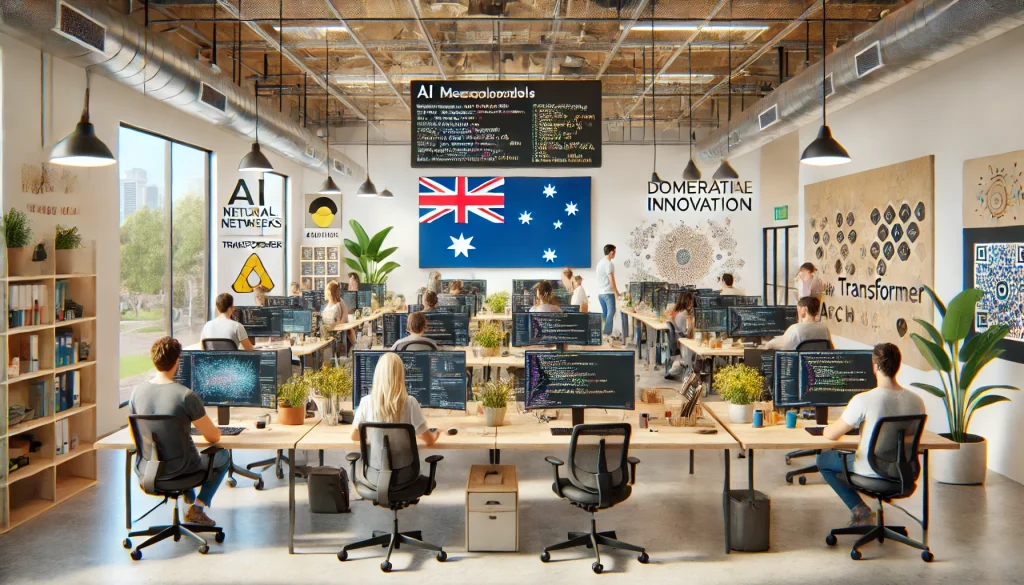In early 2025, the Australian government officially banned the use of DeepSeek, a rapidly growing AI platform developed by a Chinese startup. While DeepSeek had gained attention for its advanced analytics and chatbot capabilities, it now faces the same restrictions that previously targeted apps like TikTok on government-issued phones. Officials cite security concerns—fearful that foreign AI could open backdoors or gather sensitive data from within government networks. This move underscores the global geopolitical tensions surrounding AI and highlights Australia’s determination to protect critical information within its borders.
1. The DeepSeek Ban: Context and Motivations

1.1 Drawing Parallels to TikTok
- Earlier Bans: Australia’s new restriction echoes similar actions taken by other countries that have banned or limited Chinese tech—most prominently, the block on TikTok for government devices.
- Data Risks: Whether it’s short-form videos or AI-driven analytics, foreign platforms often raise alarms about how user data is logged or analyzed, sparking concerns over potential espionage or policy manipulation.
Outcome: By prohibiting DeepSeek on state-issued phones and tablets, Australia signals that any foreign AI with unclear data handling or potential foreign government influence will not be freely adopted by public sector agencies.
1.2 Heightened “Tech Sovereignty”
- Security-First Mindset: Government statements consistently emphasize the need for robust local or trusted AI solutions. The concern is that AI-based queries or usage logs could end up on overseas servers, risking leaks or unauthorized intelligence gathering.
- Regional Allies: Australia is hardly alone—some allied nations have taken parallel approaches, restricting or closely examining foreign AI products. They similarly cite national security or data privacy reasons.
Industry Impact: Tech sovereignty demands that either AI vendors host data on Australian soil or prove ironclad compliance with local security mandates. In turn, this can create friction for developers reliant on specialized foreign AI models or libraries.
2. Implications for Developers and Enterprises
2.1 Fragmented AI Market
- Splinternet of AI: With each country imposing unique security checks, the once global AI marketplace faces fragmentation. Certain AI tools from abroad may be off-limits in specific industries—especially government, defense, or healthcare.
- New Opportunities: Local Aussie AI startups or cloud providers can step in to fill the gap, offering “secure hosting” or compliance guarantees that foreign platforms can’t easily match.
Challenges: Aussie developers working on critical or sensitive projects must stay mindful of government procurement guidelines. Some advanced or specialized AI capabilities from outside might be disallowed, restricting the pool of solutions or stalling innovation if local equivalents aren’t yet mature.
2.2 Data Hosting and Security Reviews
- Local Data Centers: For Chinese or other foreign AI providers seeking to operate in Australia, investing in local data hosting and stringent security certifications might become necessary to avoid outright bans.
- In-House AI Development: Enterprises dependent on advanced analytics but bound by national policy might opt to develop or train models in-house—ensuring full control over their data pipelines.
Potential Upside: By encouraging local or on-prem AI solutions, organizations can reduce data leakage risks, though the approach can be costlier and require deeper ML expertise.
3. Broader Security and Policy Drivers

3.1 National Security First
- Critical Infrastructure: From water treatment to public health systems, AI increasingly powers real-time decisions. If a foreign-based AI tool manipulates or intercepts such data, it can compromise entire infrastructures.
- Geopolitical Landscape: Heightened tensions across the Asia-Pacific region push states to weigh self-reliance over cost savings or convenience, fostering robust domestic R&D.
Policy Evolution: Laws may expand to ban or heavily scrutinize other foreign software—particularly in 5G/6G telecommunications, big data analytics, or advanced robotics fields.
3.2 Developer Tensions
- Innovation vs. Restriction: While securing data from malicious infiltration is crucial, developers might find an environment that stifles open-source collaboration or cross-border knowledge sharing.
- Skill Development: In a more locked-down ecosystem, Aussie devs must rely on local examples, smaller codebases, or regionally siloed AI training data.
4. The Road Ahead: Adapting to a Secure-First AI Landscape
- Local Ecosystem Growth: The ban can spur homegrown AI ventures to flourish, serving government or sensitive industries with verified, onshore solutions.
- Global Partnerships: Some Chinese companies might partner with Aussie cloud or cybersecurity firms for an approved local variant.
- Developer Responsibility: For devs in government contracting, verifying the origins of ML libraries or AI frameworks is no longer optional. Detailed audits and compliance checks become standard.
Conclusion: Australia’s decision to ban DeepSeek resonates beyond a single AI platform. As data sovereignty emerges as a global theme, we can expect more scrutiny of foreign solutions. While it may hamper certain cross-border collaborations, it also opens opportunities for local AI innovation under a “security-first” banner.








